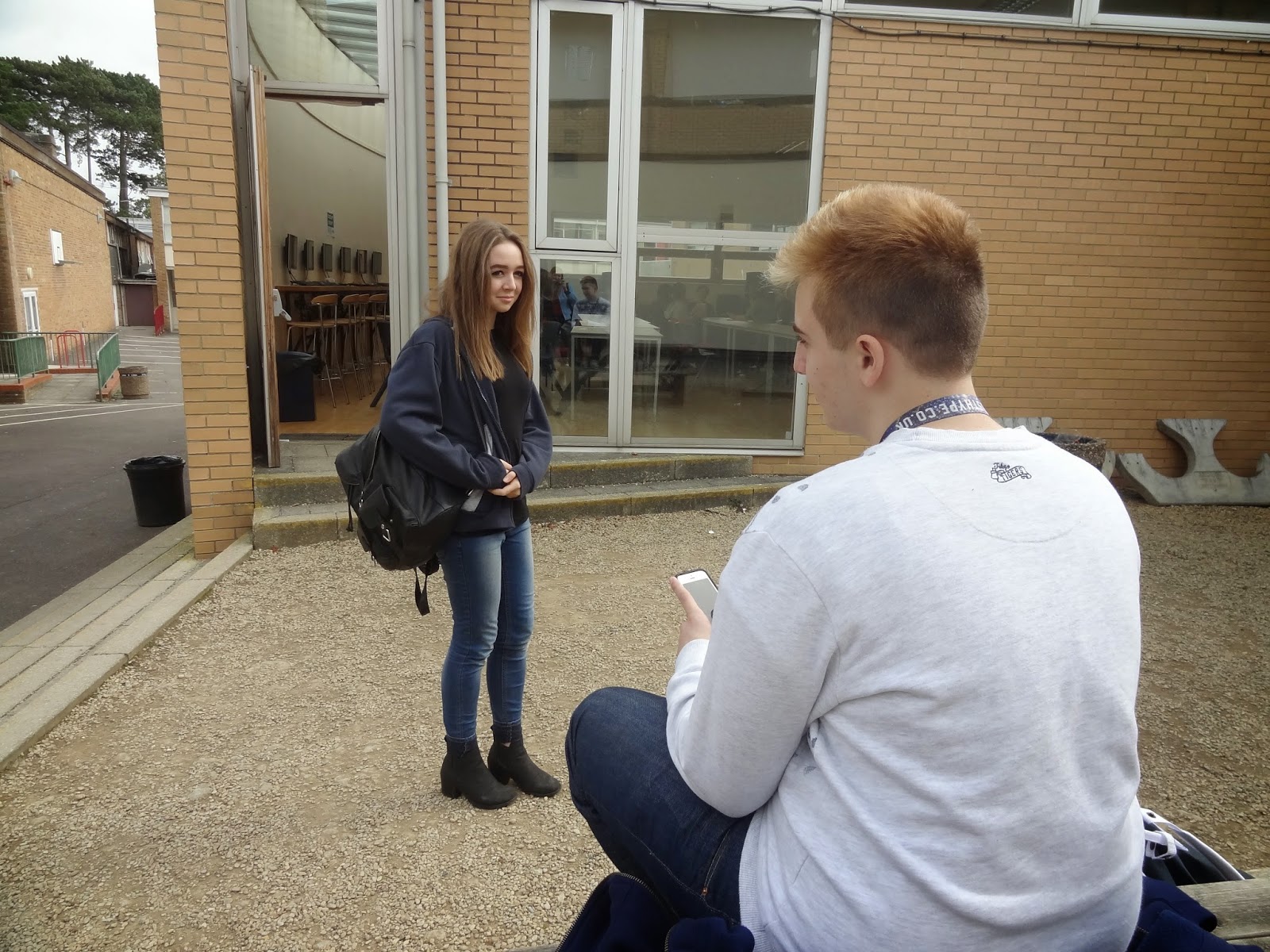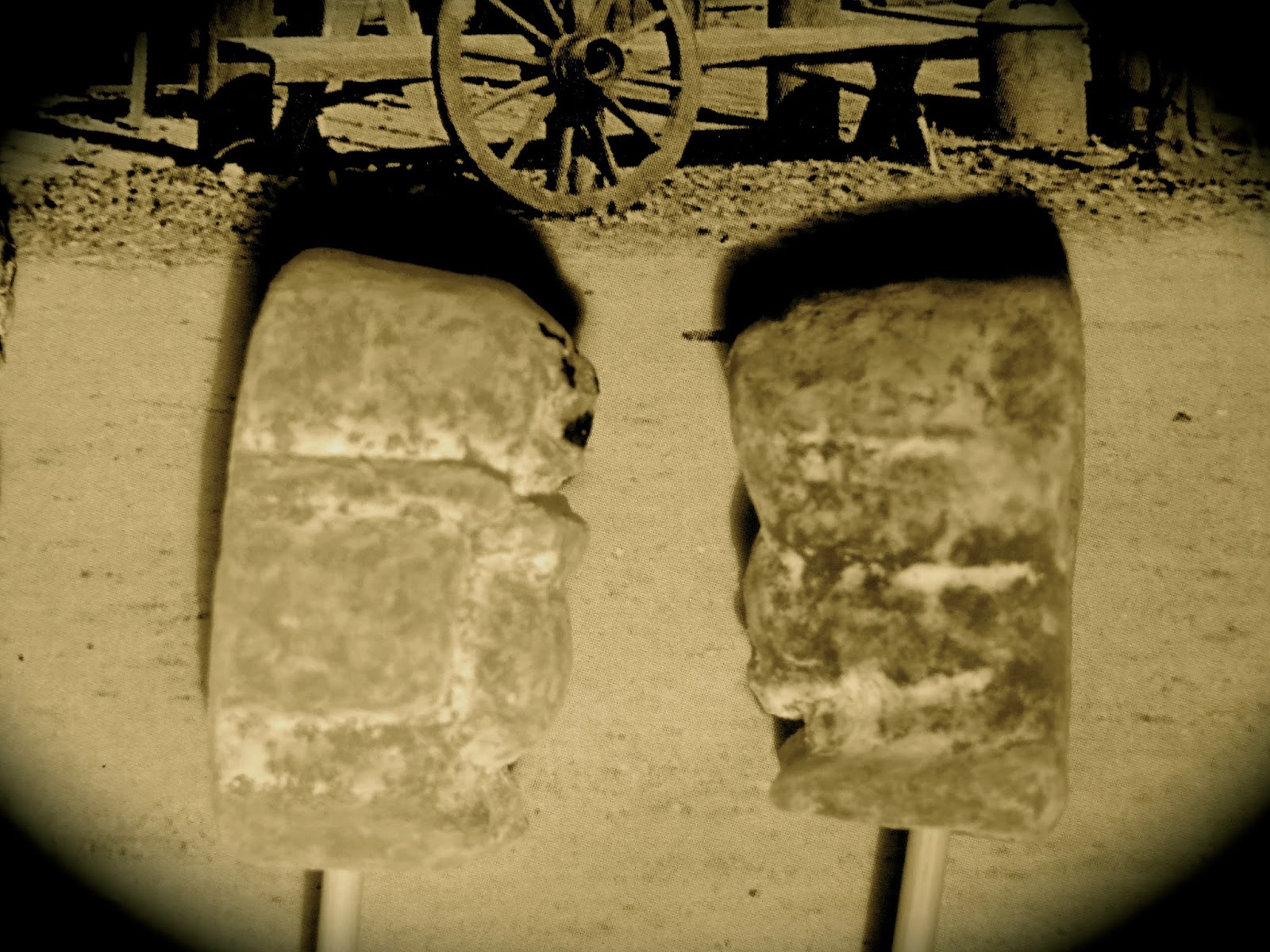 |
1) Background 1
Billy arrives in a new town
Over the shoulder, long shot
I chose this angle so that the viewer can see the vast surroundings, but not Billy's reaction to it.
|
2) Background 2
Billy walking through town
Mid shot from the side
I used this angle so the viewer can see his body language and the surroundings in more detail.
3) Background 2
Saloon doors swing open
Close up
This shot is a close up so the viewer can see the fast movement and be involved in the action.
4) Background 2
People run out of the saloon shouting
Mid to long shot
So the viewer can see all the action and the response of all the people in the crowd.
5) Background 2
Billy stood front right of shot, watching the action
Mid shot
This shot has some empty space to the left suggesting something will enter the shot soon, creating tension and suspense. It is also to show there is some distance between the crowd and Billy.
6) Background 2
Crowd all fighting
Long shot, slightly from above
So the audience is now simply watching the action, not involved in it.
7) Background 2
Crowd all freeze and turn on Billy
Mid to long shot, from a slightly low angle
Used to show distance between Billy and the crowd. Seen from Billy's point of view. Low angle used to make the crowd look threatening.
8) Background 2
Man (Buck) steps ahead of crowd
Buck "And you are?"
Close up, low level
Used to make the viewer feel as if they are in Billy's position. Low angle to make the character appear threatening.
9) Background 1
Billy and Buck face each other
Mid to long shot
To show the lack of distance between the characters now, and that they are on a fairly equal level; Billy is no longer intimidated as his confidence has increased and he is ready for a fight.
10) Background 2
Billy "I don't think it concern you mister"
Over the shoulder, mid shot
Used to show Billy's expression and reaction to Buck's dialogue.
11) Background 2
Buck "This here's my town. If you in my town, it concern me."
Close up, low level
Used to show Buck's facial expression, and low level used to evoke intimidation from audience.
12) Background 2
Summer runs past the crowd to stand between the two men
Mid shot
Used to show Summer running through the shot in relation to the crowd.
13) Background 2
Summer "Daddy, you stop it now. Don't keep fighting those boys at Six-Guns all'time"
Over the shoulder close up
This shot is to show Summer's facial expression while she is talking, and her closeness to her father.
14) Background 2
Summer turns to face Billy
Summer "Look I don't know who y'are but you'd better get outta here"
Mid shot from the side
Used to show the closeness between the characters.
15) Background 2
Billy storms off, Summer calms Buck down in the background
Close up, canted
Used so the viewer can see Billy's facial expression and the blurred action in the background - suggesting speed.
16) Background 3
Billy stood on mountain ledge
Over the shoulder long shot
This shot is used to show the audience the vastness of the surroundings as well as Billy's body language.
17) Background 3
Summer walks up to Billy from behind
Over the shoulder long shot
Used to show the distance between the two characters, but no facial expressions.
18) Background 3
Summer walks closer to Billy
Mid shot from the side
Used to show the closeness between the characters now.
19) Background 3
Billy turns to face Summer
Billy "What've I done wrong now missy? You'd better not be telling' me to get lost from here too!"
Close up
Used to show Billy's angry facial expression whilst he is talking.

20)
Background 3
Summer "No, I just wanted to say sorry about my daddy earlier. He can get real angry sometimes. And I realised I never introduced myself. I'm Summer."
Close up
Used to show Summer's facial expression whilst she is talking. The audience now see her softer side and that she simply means well.



















































